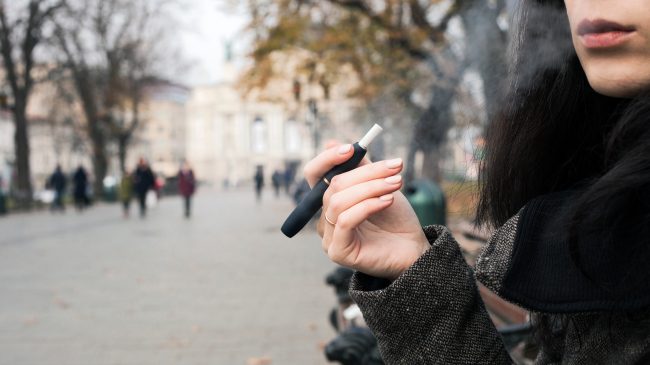Heated tobacco products are part of a new generation of non-combusted products intended to give adult smokers the nicotine they desire without generating the smoke that may kill them. By heating instead of burning tobacco, these products emit much lower levels of harmful toxicants compared to cigarettes. Combustion at high temperatures causes emissions that expose cigarette smokers to complex and extremely hazardous chemicals, which when inhaled have numerous ill effects on the user’s health. This problem was articulated by tobacco researcher Michael Russell who said: “People smoke for the nicotine, but they die from the tar.”
The only heated tobacco product currently authorized for sale in the U.S. is Philip Morris International’s (PMI) Tobacco Heating System (THS), sold under the brand IQOS. The battery-powered device uses a heating blade to warm a stick of leaf tobacco to a maximum temperature of 570 degrees Fahrenheit to ensure the tobacco doesn’t burn. The tip of a burning cigarette, by contrast, exceeds 1,300 degrees Fahrenheit.
This regulated heating process creates a tobacco-flavored vapor containing nicotine but produces no smoke or ash because no combustion is taking place. Each tobacco stick generates 12–14 puffs and lasts around five minutes, about the same as the typical time and puff amount of an ordinary cigarette. Because IQOS uses leaf tobacco and lasts the length of an average cigarette, it mimics much of the ritual, taste and sensory experience of smoking. Unlike e-cigarettes, IQOS flavors are limited to tobacco and menthol. The tobacco sticks meet the Food and Drug Administration’s (FDA) definition of a cigarette and are categorized as non-combusted cigarettes.
Critics of harm reduction products in general often argue that, because the long-term effect of these products is unknown, they should be treated the same as cigarettes until proven otherwise. The problem with this line of argument is that the dire effects of cigarette smoking are visible and known.
In the decades it will take to discover the exact effect IQOS will have on its users, millions of Americans will die from a smoking-related disease. Harvard law professor and former regulatory czar Cass Sunstein encapsulated the problem with this precautionary approach:
The precautionary principle, for all its rhetorical appeal, is deeply incoherent. It is, of course, true that we should take precautions against some speculative dangers. But there are always risks on both sides of a decision; inaction can bring danger, but so can action. Precautions, in other words, themselves create risks—and hence the principle bans what it simultaneously requires.
On the balance of the available evidence, the dangers of impeding IQOS as a tool to help smokers quit far outstrips any possible threat it could pose to public health.

